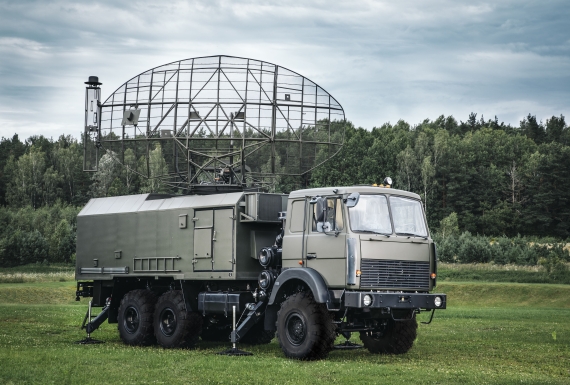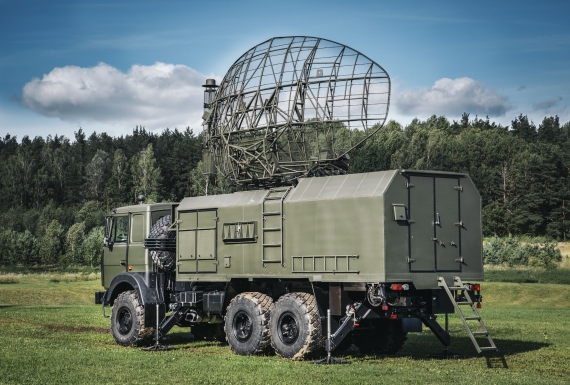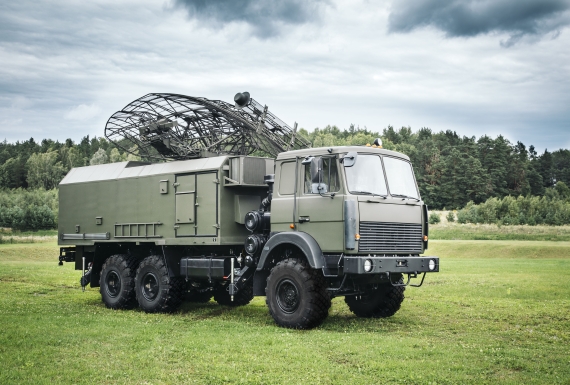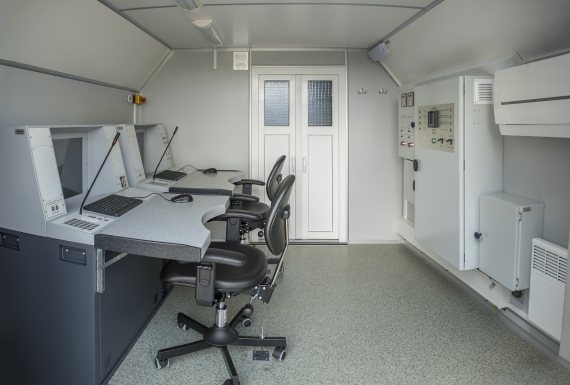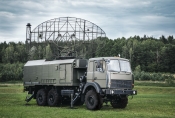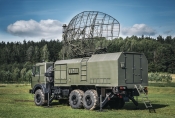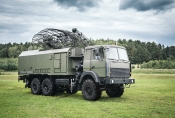MARS-L
- Home
- Radar systems
- MARS-L
Mobile combined PSR/SSR L-band Radar MARS-L is a ground-based radar system implementing combined operation of primary and secondary channels. Design of transmitter and receiver of MARS-L relies on advanced technology of operation with complex strobing signals and jamming protection.
Combined operation of primary and secondary channels allows for significant increase in detection range and accuracy at relatively low radiation power. Besides, availability of additional flight information (flight number, altitude, remaining fuel, technical status, etc.) increases flight safety and diminishes the probability of anti-aircraft missile accident engagement against commercial aircraft.
Functions of MARS-L:
- aircraft detection, displaying of position, automatic measurement of range and azimuth from radar primary channel;
- aircraft interrogation, receiving and displaying replies from radar secondary channel;
- combining data received from primary and secondary channels;
- automatic tracking, flight trajectory estimation;
- acquisition, displaying and processing of air situation from another radar, generation of multi-radar tracks
- automatic height-finder control, altitude calculation;
- automatic distribution of air situation;
- recording of air situation;
- semi-automatic topographic referencing of radar position (GPS-based);
- technical monitoring and diagnostics.
- build-up of radar coverage, air defence combat alert duty in peaceful time (airspace control, monitoring of airspace use, etc.)
- flight mission assurance in the terminal area;
- strategic build-up of radar coverage;
- provision of surveillance and combat information to anti-aircraft missile units, air force units, EW units when conducting combat operations;
- flight mission assurance of commercial and NATO aviation for joint actions, exercises and operations involving army.
- as aerodrome control radar for flight mission assurance units;
- as radar field gap filler for radar troops;
- as mobile low-altitude surveillance radar for Land Forces Air Defense;
- as mobile NATO standardized secondary radar for rapid reaction force peacekeeping operations;
- as target acquisition and designation radar for prospective anti-aircraft missile systems.
Asynchronous pulse interference is completely suppressed by digital signal processing.
Passive interference is rejected through digital MTI and generation of adaptive clutter map. Operating range of MTI is from 0 to 150 km.
Protection against active jammers is implemented through automatic jamming monitoring with displaying of jamming environment on workstation monitor, PSR frequency shifting (250 frequencies with 0,4 MHz steps), wide dynamic range of the PSR receiver and digital signal processing unit.
|
Parameter |
Value |
|
|
Power consumption |
8 kW |
|
|
Start-up time: |
|
|
|
3 min |
|
|
4 – 5 min |
|
|
Time of deployment (tearing down) by qualified personnel |
10 min |
|
|
Protocol of data acquisition and output |
ASTERIX |
|
|
Number of vehicles |
1 |
|
|
Travel speed: |
|
|
|
25 – 40 km/h |
|
|
40 – 60 km/h |
|
|
MTBF |
5000 h |
|
|
MTTR |
30 min |
|
|
Service life |
10 years or 60 000 h |
|
|
|
PSR channel |
SSR channel |
|
Operating frequency range |
1250 - 1350 MHz |
RBS: 1030 MHz – interrogation, 1090 MHz – response, Eastern UVD: 1030 MHz – interrogation; 740 MHz – response |
|
Frequency adjustment |
250 frequencies, electronic |
|
|
Coverage area:
|
360° 110 km 0,5° - 28° 1500 m |
360° 200 km 0,5° - 28° 1500 m |
|
Refresh rate |
10; 20 s |
10; 20 s |
|
Accuracy:
|
150 m 5° |
200 m 5° |
|
Resolution:
|
250 m 5° |
150 m 5° |
|
Track capacity |
100 |
|
|
Transmitter pulse power |
1,8±0,2 kW |
1,8±0,2 kW |
|
Probing signal types and duration:
|
1,5 μs |
Interrogation – 0,8 μs response – 0,45 μs |
